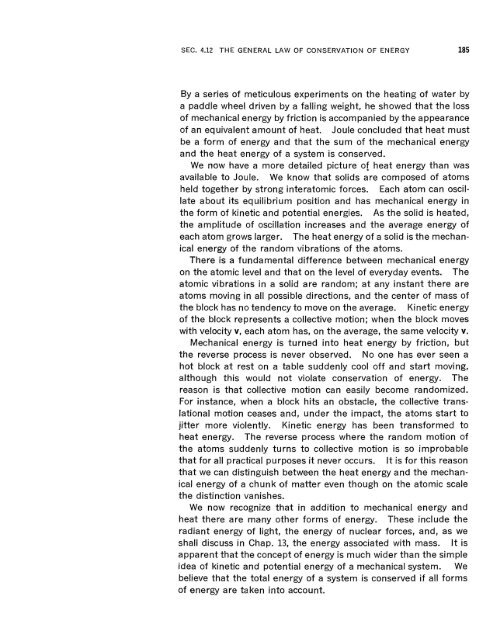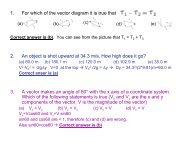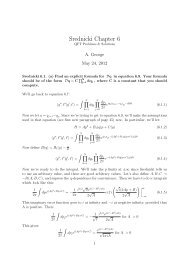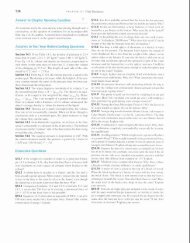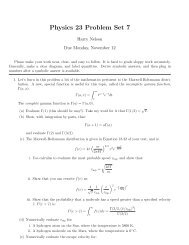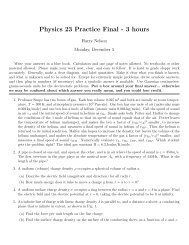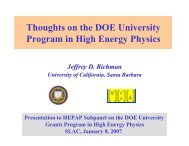Chapter 4 - UCSB HEP
Chapter 4 - UCSB HEP
Chapter 4 - UCSB HEP
You also want an ePaper? Increase the reach of your titles
YUMPU automatically turns print PDFs into web optimized ePapers that Google loves.
SEC. 4.12 THE GENERAL LAW OF CONSERVATION OF ENERGY 185<br />
By a series of meticulous experiments on the heating of water by<br />
a paddle wheel driven by a falling weight, he showed that the loss<br />
of mechanicaf energy by friction is accompanied by the appearance<br />
of an equivalent amount of heat. Joule concluded that heat must<br />
be a form of energy and that the sum of the mechanical energy<br />
and the heat energy of a system is conserved.<br />
We now have a more detailed picture of heat energy than was<br />
available to Joule. We know that solids are composed of atoms<br />
held together by strong interatomic forces. Each atom can oscillate<br />
about its equilibrium position and has mechanical energy in<br />
the form of kinetic and potential energies. As the solid is heated,<br />
the ampfitude of oscillation increases and the average energy of<br />
each atom grows larger. The heat energy of a solid is the mechanical<br />
energy of the random vibrations of the atoms.<br />
There is a fundamental difference between mechanical energy<br />
on the atomic level and that on the level of everyday events. The<br />
atomic vibrations in a solid are random; at any instant there are<br />
atoms moving in all possible directions, and the center of mass of<br />
the block has no tendency to move on the average. Kinetic energy<br />
of the block represents a collective motion; when the block moves<br />
with velocity v, each atom has, on the average, the same velocity v.<br />
Mechanical energy is turned into heat energy by friction, but<br />
the reverse process is never observed. No one has ever seen a<br />
hot block at rest on a table suddenly cool off and start moving,<br />
although this would not violate consewation of energy. The<br />
reason is that collective motion can easily become randomized.<br />
For instance, when a block hits an obstacle, the collective translational<br />
motion ceases and, under the impact, the atoms start to<br />
jitter more violently. Kinetic energy has been transf~rmed to<br />
heat energy. The reverse process where the random motion of<br />
the atoms suddenly turns to collective motion is so improbable<br />
that for all practical purposes it never occurs. It is for this reason<br />
that we can distinguish between the heat energy and the rnechanical<br />
energy of a chunk of matter even though on the atomic scale<br />
the distinction vanishes.<br />
We now recognize that in addition to mechanical energy and<br />
heat there are many other forms of energy. These include the<br />
radiant energy of light, the energy of nuclear forces, and, as we<br />
shall discuss in Chap. 13, the energy associated with mass. It is<br />
apparent that the concept of energy is much wider than the simple<br />
idea of kinetic and potential energy of a mechanical system. We<br />
believe that the total energy of a system is conserved if all forms<br />
of energy are taken into account.


